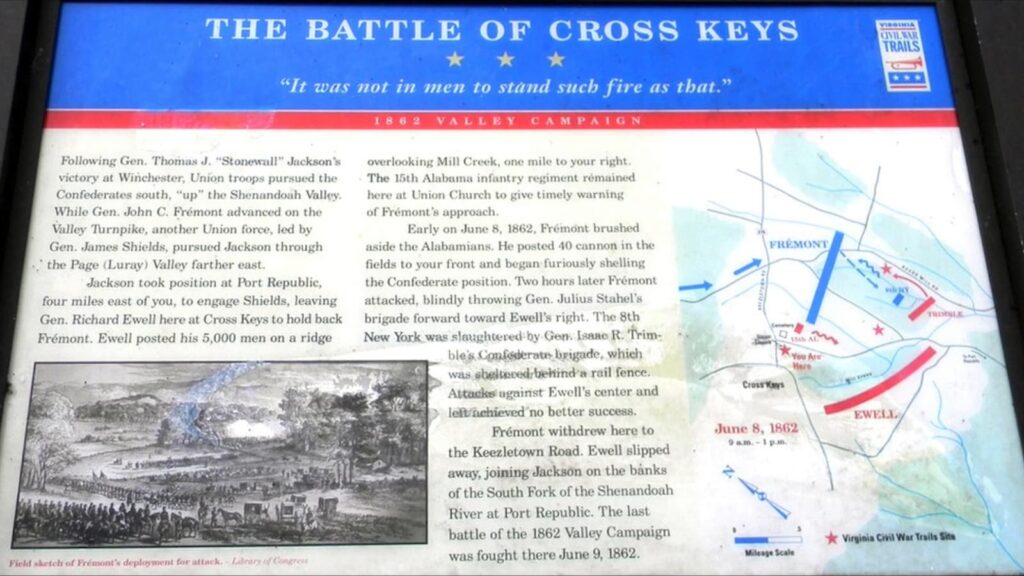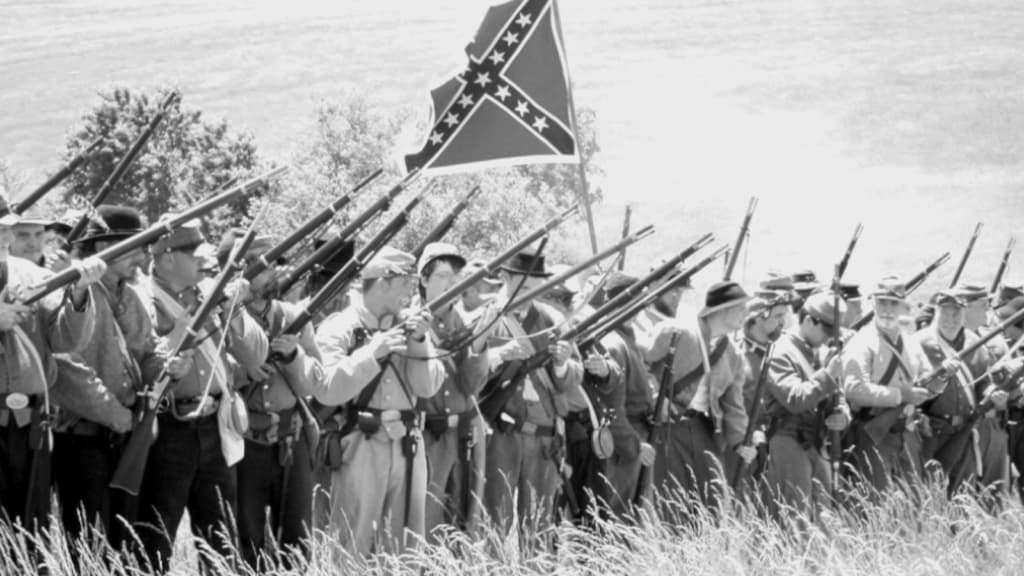An Overview of the Cross Keys Battle
Testament to the tactical brilliance of the Confederacy, the Cross Keys Battle occurred on June 8, 1862, leaving a lasting impact on the Shenandoah Valley battles during the Civil War. This battle, along with the Battle of Port Republic which transpired a day later, played a critical role in leading to the close of Jackson’s Valley Campaign.
In Rockingham County, Virginia, the site of the Cross Keys battle, a vast 533-acre expanse, has been preserved for posterity by the American Battlefield Trust. Today, visitors can stroll along the Artillery Ridge where Confederate forces encamped, or visualize the aftermath at an erstwhile church that transformed into a makeshift hospital following the battle.
In the context of the Cross Keys Battle, it is essential to explore what the Union and Confederacy have in common.
Cross Keys Battle Play-by-Play
In early 1862, Gen. Stonewall Jackson led his Confederate force through the Shenandoah Valley, displaying both speed and strategic proficiency. This display of Confederate prowess, following Jackson’s victory in the Battle of Kernstown, prompted Union Generals Frémont and Shields to hatch a plan to corner Jackson’s forces from both sides.
Undeterred by the Union’s tactics, Stonewall Jackson hatched a preemptive strike to intercept the two Union armies’s consolidation at Port Republic. Jackson’s forces secured a stronghold at Port Republic, taking over the North Bridge, the only surviving bridge straddling the Shenandoah River, thus gaining a strategic advantage.
Gen. Ewell, a Confederate commander, was instructed to engage Frémont at Cross Keys and foil his advancement. The confrontation unfolded on June 8, 1862, a significant Sunday, with Frémont’s forces numbering around 11,500, nearly double the size of Ewell’s troop strength of around 5,800.
Contrary to what the numbers suggested, the Union forces didn’t manage to capitalize on their numerical advantage. Mistakenly assuming Stonewall Jackson’s entire army to be positioned at Cross Keys, Frémont postponed his assault, unwittingly giving Ewell an opportunity to bolster his position along Artillery Ridge.
The Union army’s right flank, assumed by Frémont to be the weakest point, was in fact guarded by a brigade led by Gen. Isaac R. Trimble. Catching Frémont’s forces off guard, Trimble’s brigade unleashed a relentless onslaught, resulting in heavy Union losses. Ironically, Stonewall Jackson had delegated full command to Ewell, a rare occurrence highlighting Jackson’s trust in Ewell’s leadership.
As dusk set in and the Union forces were pushed back to Keezletown Road, Ewell decided it was the right time to recall his troops, aware that they had already secured victory. The Union sustained a loss of 557 soldiers and 100 were captured, while Confederate casualties stood at 288, including 41 deaths.
This triumph allowed Ewell’s army to rejoin Jackson’s forces in the south and prepare to engage Shields, marking this as a significant moment in the Civil War.
Memorable Locations at the Cross Keys Battle Site

The Cross Keys battlefield is dotted with places of historical interest.
- The Cross Keys Cemetery, for instance, served as a rallying and reloading point for Ewell’s men during the battle, and today it is the final resting place for several Civil War soldiers;
- The original Civil War-era church, known today as the Cross Keys Ruritan Hall (Union Church), acted as a medical aid station during the battle;
- For history enthusiasts, the Port Republic Museum, housed in a historic building known as the Frank Kemper house, is a treasure trove of information about the battle and the history of the local area;
- Artillery Ridge continues to stand, a silent reminder of the Confederate troops’ strategic formation during the battle.
The Aftermath and Its Repercussions
The Battle of Cross Keys coupled with the ensuing Battle of Port Republic marked the successful conclusion of Jackson’s Valley Campaign. The Union forces’ defeat in both battles boosted the morale of the Southern forces and bolstered Confederate General Robert E. Lee’s resolve to launch an attack on the Union Army in the Seven Days’ Battles, which arguably shifted the balance of the Civil War.
Legacy and Preservation of Cross Keys

Owing to the combined efforts of local, state, and national organizations like the American Battlefield Trust, the battlefield has been preserved and transformed into an interactive outdoor history lesson. The battle’s actual locations coupled with informative signage provide visitors with a sense of being transported back to the events of June 8, 1862, fostering a deeper understanding of the conflict and its consequences.
Conclusion
The Battle of Cross Keys was a pivotal encounter during the American Civil War, underlining the strategic acumen of the Confederate forces under General Ewell. The preservation of the battlefield serves as a living testament to this significant event, providing an immersive experience for visitors interested in exploring the dense tapestry of American history. The balance of power, the strategic maneuvers, and the ultimate victory of the Confederates at Cross Keys added an important chapter to the narrative of the Civil War. The exploration of the Cross Keys Battle, therefore, offers an enriching perspective on the complexities of warfare, the human cost, and its enduring legacy.
